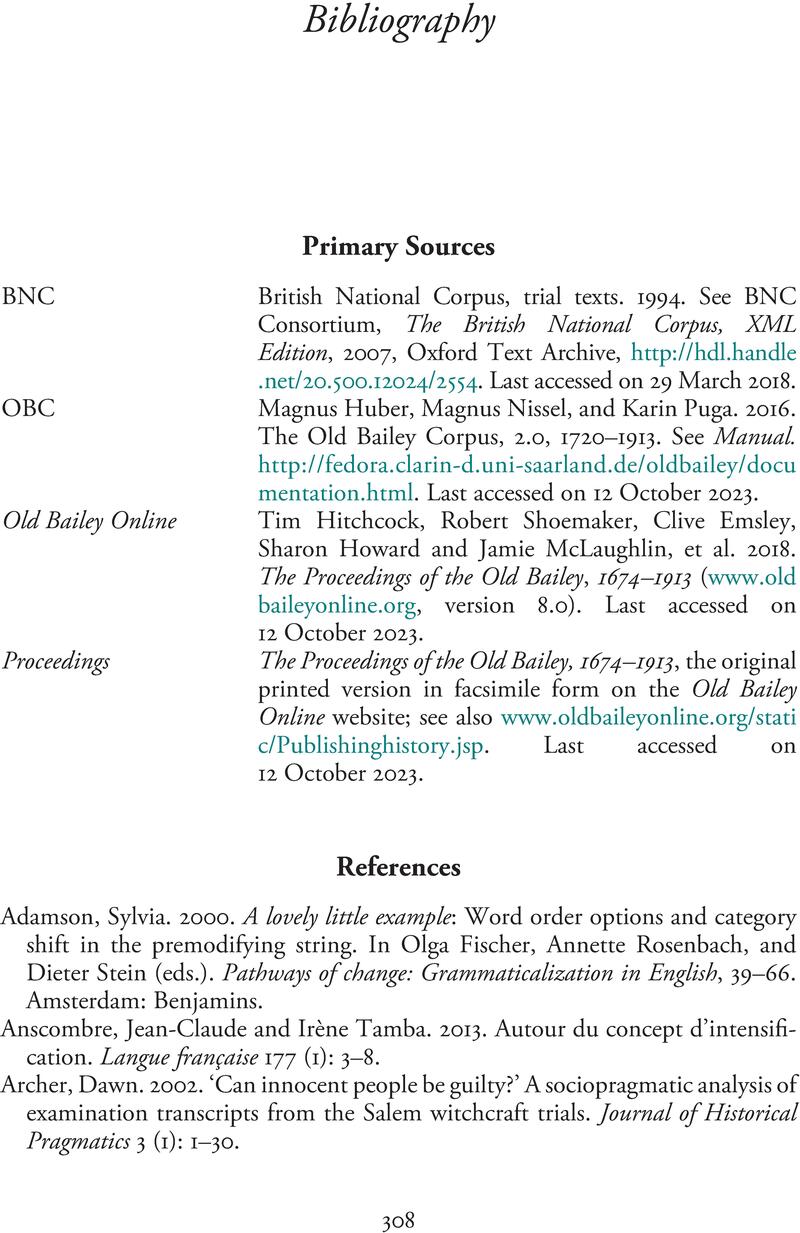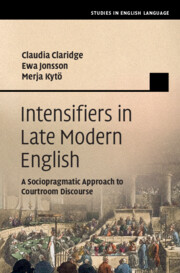Book contents
- Intensifiers in Late Modern English
- Studies in English Language
- Intensifiers in Late Modern English
- Copyright page
- Dedication
- Contents
- Figures
- Tables
- Acknowledgements
- Abbreviations and Notations
- Chapter 1 Introduction
- Chapter 2 Theoretical and Methodological Considerations
- Chapter 3 Intensifiers
- Chapter 4 Corpus Methodology and Overview of Data
- Chapter 5 Maximizers
- Chapter 6 Boosters
- Chapter 7 Downtoners
- Chapter 8 Multivariate Analysis
- Chapter 9 Intensifiers across Time
- Chapter 10 The Pragmatics of Intensifiers
- Chapter 11 The Sociolinguistics of Intensifiers
- Chapter 12 Conclusion
- Book part
- Bibliography
- Index
- References
Bibliography
Published online by Cambridge University Press: 15 March 2024
- Intensifiers in Late Modern English
- Studies in English Language
- Intensifiers in Late Modern English
- Copyright page
- Dedication
- Contents
- Figures
- Tables
- Acknowledgements
- Abbreviations and Notations
- Chapter 1 Introduction
- Chapter 2 Theoretical and Methodological Considerations
- Chapter 3 Intensifiers
- Chapter 4 Corpus Methodology and Overview of Data
- Chapter 5 Maximizers
- Chapter 6 Boosters
- Chapter 7 Downtoners
- Chapter 8 Multivariate Analysis
- Chapter 9 Intensifiers across Time
- Chapter 10 The Pragmatics of Intensifiers
- Chapter 11 The Sociolinguistics of Intensifiers
- Chapter 12 Conclusion
- Book part
- Bibliography
- Index
- References
Summary

- Type
- Chapter
- Information
- Intensifiers in Late Modern EnglishA Sociopragmatic Approach to Courtroom Discourse, pp. 308 - 327Publisher: Cambridge University PressPrint publication year: 2024



